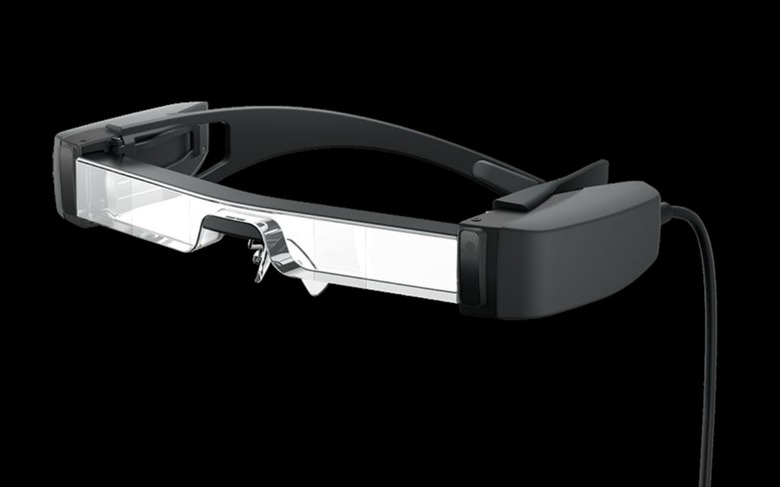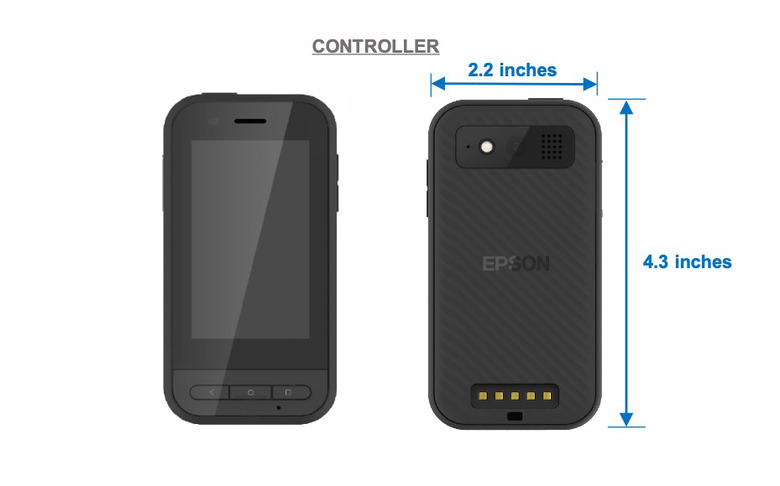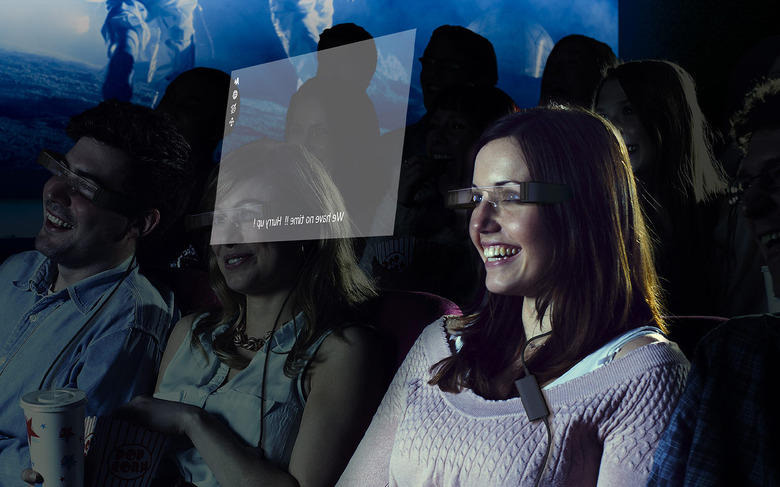Epson's New Smart Glasses Get A Big Field-Of-View And Blunt Expectations
Epson is launching a new set of augmented reality glasses, with the Moverio BT-40 and BT-40S promising a bigger field of view and much higher resolution. Targeting enterprise applications – though not averse to tech-hungry consumers – the new AR eyewear can either be connected directly to a smartphone, or plug into Epson's new Android mini-computer.
Compared to the old BT-350 and BT-30C, the BT-40/BT-40S use Epson's Gen.4 Si-OLED displays. Each eye gets a 0.45-inch panel built into the arms of the glasses, running at 1080p resolution with a 500,000:1 contrast ratio.
That's a big uptick from the 720p HD resolution of the old eyewear, and it's also capable of producing a far larger picture in your field of view. At 34-degrees it's now up 225-percent, compared to the BT-3x series' 23-degrees, Epson says. That's roughly equivalent to watching a 120-inch screen from 15 feet away.
The glasses' ergonomics have been tweaked, too. They still come with a magnetic dark shade for use in brighter environments, but the weight distribution has been modified with the arms now folding at the temples. That should mean more comfortable extended use, Epson promises, along with a better fit thanks to springs to auto-adjust to different head sizes, and removable nose pads.

Both versions of the eyewear have the same displays, the same 9-axis motion sensor, gyroscope, accelerometer, magnetometer, and ambient light sensor. The Epson BT-40 has a USB Type-C connector, designed to plug directly into a laptop, phone, or tablet. That way it can be used as a private external display, or for media consumption.
The Epson BT-40S, meanwhile, comes with the latest version of Epson's Intelligent Touch Controller. The BO-IC400 is effectively a mini-PC running Android 9.0 – though Epson says Android 11 should arrive within a year of launch – on a Qualcomm Snapdragon XR1 chipset. There's a 2.95-inch 854 x 480 touchscreen and 7 physical buttons, along with a 13-megapixel camera, WiFi 802.11ac and Bluetooth, a speaker and noise-cancelling microphone, and 64GB of storage with a microSD slot for up to 2TB cards.
The BO-IC400 has two USB-C ports – one for the BT-40S headset, the other for accessories – and Epson says it should run for up to 5 hours depending on how you use it. You can mirror apps, having them open on both the touchscreen and the headset, or use it in extended mode where the touchscreen shows the Android app launcher while software loads on the glasses. Alternatively, you can use the touchscreen as a trackpad or directional controller to navigate what you see in the headset.

While this isn't Epson's first mini-PC, of the big advantages for this iteration is that it has Google Mobile Services. That means it'll be able to come preloaded with apps like Gmail, Google Maps, Chrome, Google Photos, and the Google Play store. Epson is also looking at the possibility of loading video conferencing apps like Teams and Zoom, the company says, since remote collaboration is one of the big use-cases businesses are already relying on its headsets for.
The Moverio BT-40 will be priced at $579, while the BT-40S bundle will be $999. Meanwhile the existing Epson BT-35E will be $799, and continue targeting the drone pilot audience.
While Epson will be happy to sell the new headsets to individual consumers, it's increasingly realistic about where augmented reality will grow, at least for the moment. "Lots of AR companies look for that sticky consumer application," Remi Del Mar, senior product manager of Digital Experiences, Augmented Reality and Commercial Display Solutions at Epson America, pointed out in an interview; for Epson, that's mainly been drones in the US, and tourism in Europe. However, for the time being, the "majority of our focus is going to be on enterprise applications."

It'll mean Epson can bypass, for the time being at least, questions around whether smart glasses should include cameras. "This privacy aspect is sticky," Del Mar agrees. "If you do a non-camera version, it's more consumer friendly, but is there enough of an application for it?"
The other side to that strategy is that Epson isn't just building AR glasses to sell, but using them to pitch its own Si-OLED optical engines. The company is tight-lipped on who it might be talking to on that front – Del Mar says that there are some pilots underway in Taiwan, but won't be drawn on any more details – but it means that Epson doesn't feel the need to be in every segment, or compete on every front.
It doesn't, for instance, have versions of the Moverio range for healthcare or telemedicine, despite seeing them as potential growth segments, in no small part because of the intricacies of the regulations around devices used in medical settings. However, Epson would be quite happy to provide the optical engines to go into third-party solutions for that.
The new Moverio BT-40 and BT-40S will go on sale in Q2 2021.
